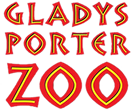Putting Wildlife Back: The Animal Health Department at the Gladys Porter Zoo is the principal wildlife rehabilitation unit for the Rio Grande Valley. Wildlife rehabilitation involves caring for injured, ill and orphaned wild animals with the goal of releasing each into its natural habitat. Animals are brought to the zoo by citizens or animal control officer or Texas Ordinarily it is illegal for a citizen to possess wildlife for any reason. The zoo holds state and federal permits that allow it to legally hold wildlife during treatment. Our goal is always to release an animal back into the wild; rarely the animal will be kept in a zoo or other licensed facility as an ambassador for its species to be used for educational purposes. Sometimes, because of an untreatable injury an animal is deemed “non-releasable” and is humanely euthanized. The Zoo spends approximately $30,000 a year treating injured wildlife and we receive no federal or state funding towards this cause.
We believe that treating wildlife is a worthwhile cause because many of the injuries and illnesses sustained by wildlife are a direct result of human-animal interactions. Human society and urban sprawl affect wildlife in many ways. Our roads and highways transect migratory pathways and our pets, especially cats, decimate wildlife such as birds. Our garbage attracts wildlife like raccoons and opossums that enter our neighborhoods where they are injured by dogs, cats, or vehicles. We continue to build new dwellings on previously wild lands displacing the wildlife residents. It is our responsibility as a society to minimize our detrimental effect and to try to help injured wildlife whenever possible. It is very rewarding to release an animal back into its natural habitat and give it another chance at life; we try to do our part to conserve the wild animals of the Rio Grande Valley.


